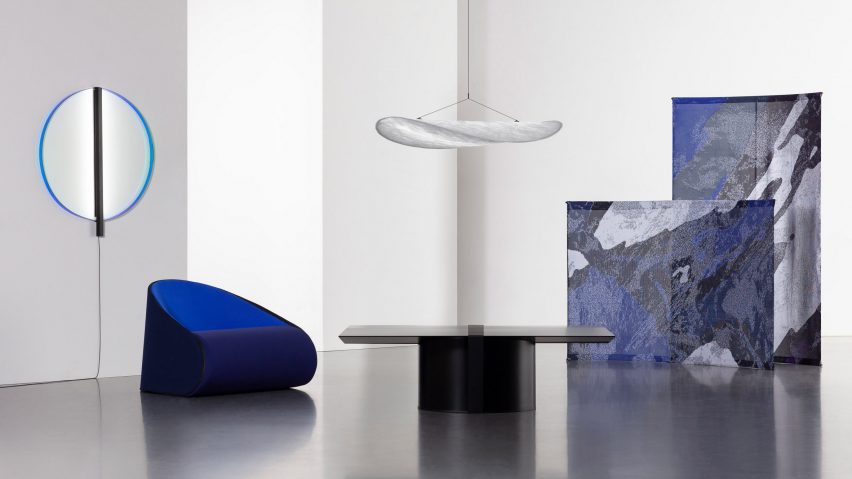
Panter & Tourron creates ultra-light and tool-free furniture for global nomads
Lausanne design studio Panter & Tourron's Tense collection is a set of flat-packed furniture essentials that together weigh less than 20 kilograms and can be easily assembled anywhere.
Presented at the Alcova exhibition space on Via Popoli Uniti during Milan design week, the five-piece collection is a research project looking at innovative furniture solutions for a globally mobile generation.
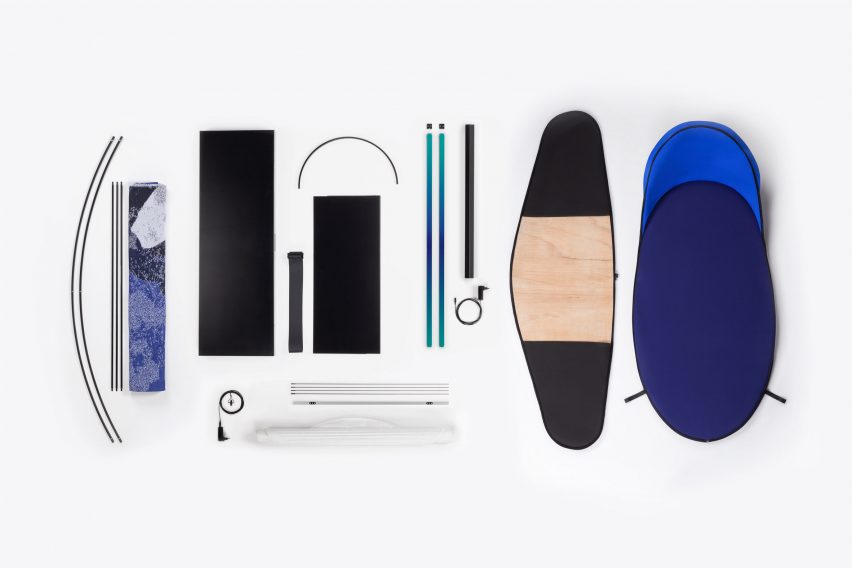
It comprises a table, chair, pendant light, wall light and screens that can be used to divide a space. All the pieces are extremely lightweight and hold their shape solely using tensile strength.
The designers were inspired to create the collection on the back of research into the future of the home.
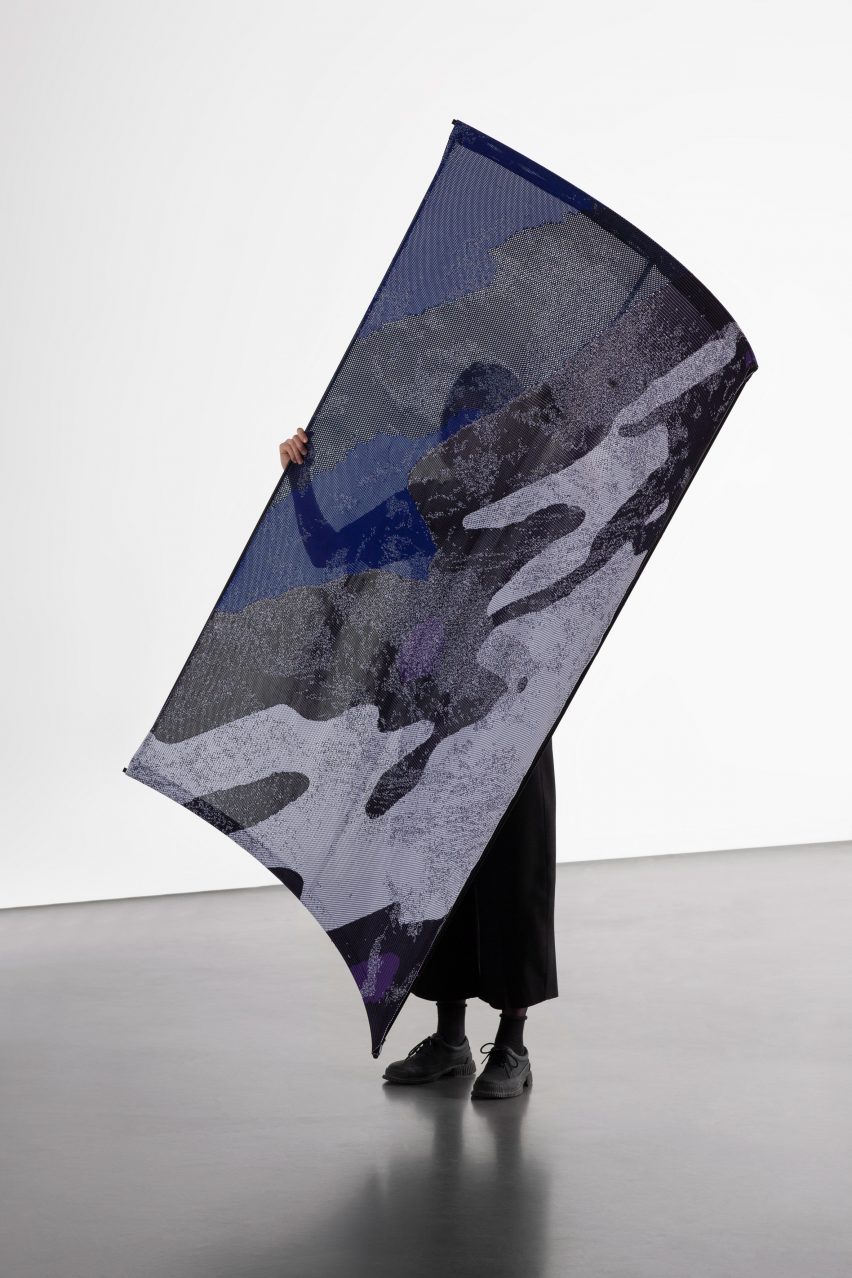
"Our parents and grandparents invested in a home and lived there all their life, but this tendency is really changing nowadays," Tourron told Dezeen.
"We have nomadic tendencies; thanks to work, love, studies, we are displaced more and more nowadays, so it's hard to invest in heavy stuff and move around with them."
Each of the five items are easy to transport either flat or in a tube, and can be assembled without the need for parts or tools, "allowing one to recreate and rebuild a home anywhere in a few simple steps".
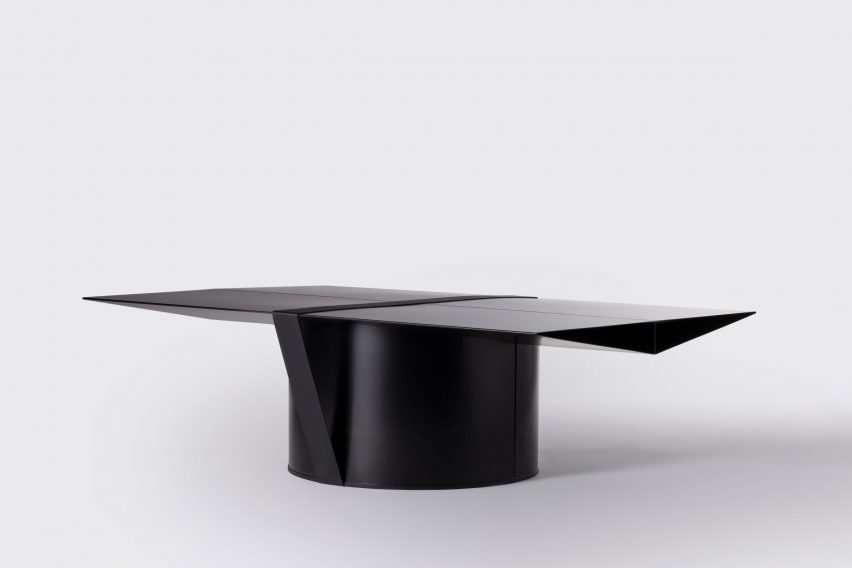
The table is extremely durable with a flat top made from thin sheets of aluminium, resting on a hollow circular drum base of the same material. The two elements are held together with a strip of plastic belt that secures under the base.
The whole table weighs less than six kilograms and requires no screws, which Tourron describes as "one of the first things to make furniture obsolete".
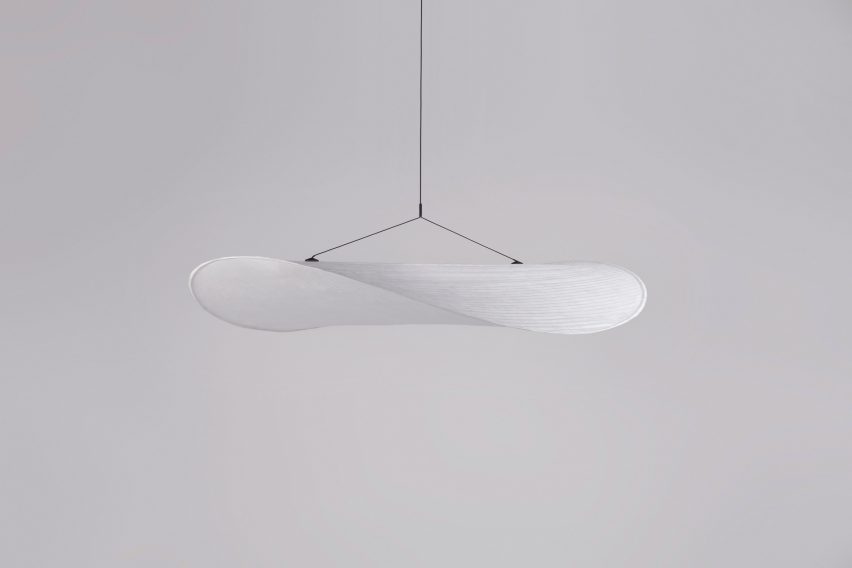
The screens are made from the same material used to make woven trainer uppers and weigh just two kilograms.
The studio worked with Stoll, the company that sells flat knitting machinery to Nike, to produce an attractive camouflage-patterned fabric made from polyamides produced from recycled plastic bottles.
"The idea was to make sustainable furniture but really beautiful looking and it’s not obvious that it's eco-furniture," said Tourron.
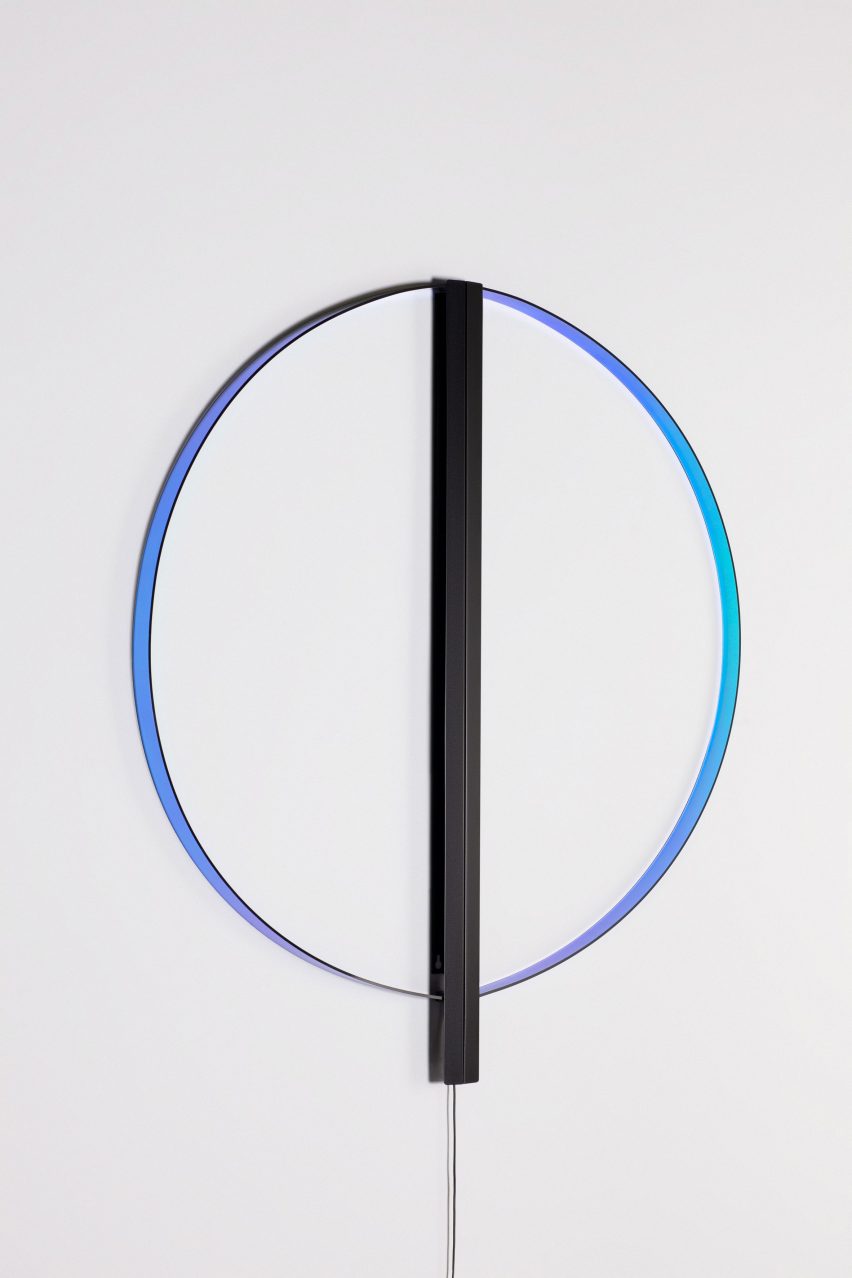
The chair is made from two elliptical pieces of plywood held together with straps that form the base and curved back, with a blue neoprene cover that zips over the exterior. The studio describes the system as working "in the same way as a tennis ball".
All the pieces of the chair fit in a large envelope that the studio are currently developing that it hopes will measure around one metre by 50 centimetres.
"A chair is usually a moulded form, and it's very expensive to buy the moulds, then it's glued on a wooden structure, with very bad glue and then stapled fabric which is absolutely non-recyclable," explained Tourron of their different approach.
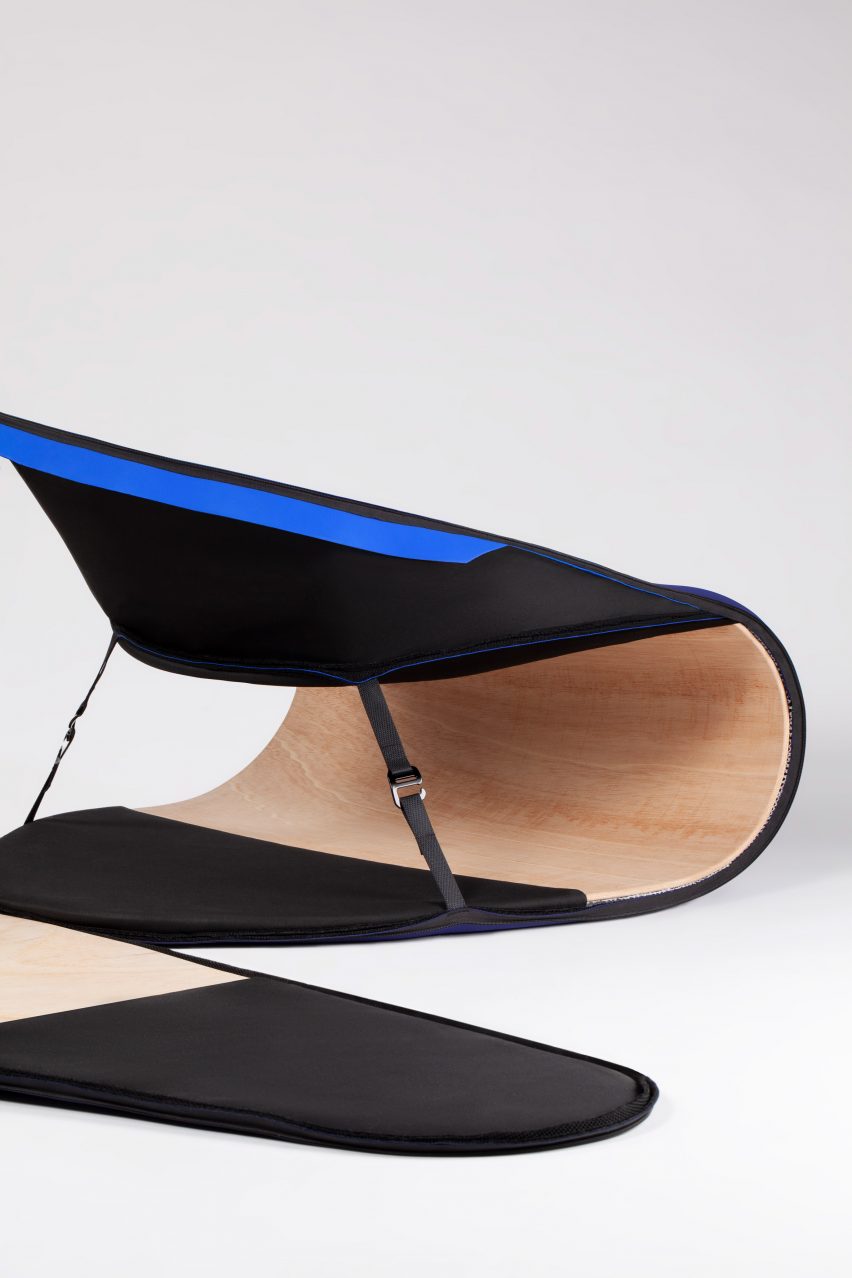
The non-woven paper light weighs just 250 grams and features an LED strip light inside two joined paper discs. It's both waterproof and impossible to rip, and can be rolled up and delivered in a tube.
The round wall light has a bendable acrylic edge covered in dichroic film to create a coloured effect. Like the light, it can also be shipped in a tube, which the studio suggests will reduce transportation costs.
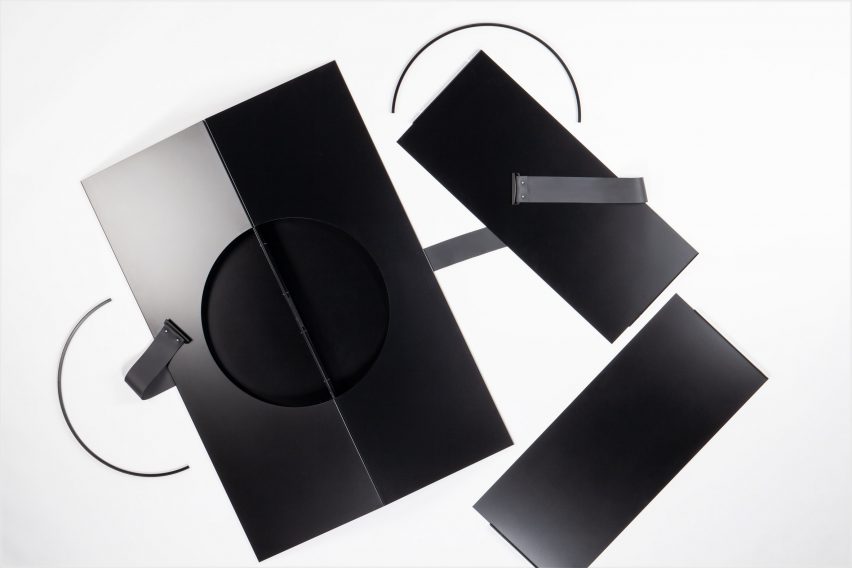
"We think that lightweight is the future of sustainability, because you pollute less and you pay less money to transport," said Tourron.
By applying principles learnt from the technology world to furniture production and using a library of durable, sustainable materials, the studio hopes to change the focus of the industry towards more sustainable practices.
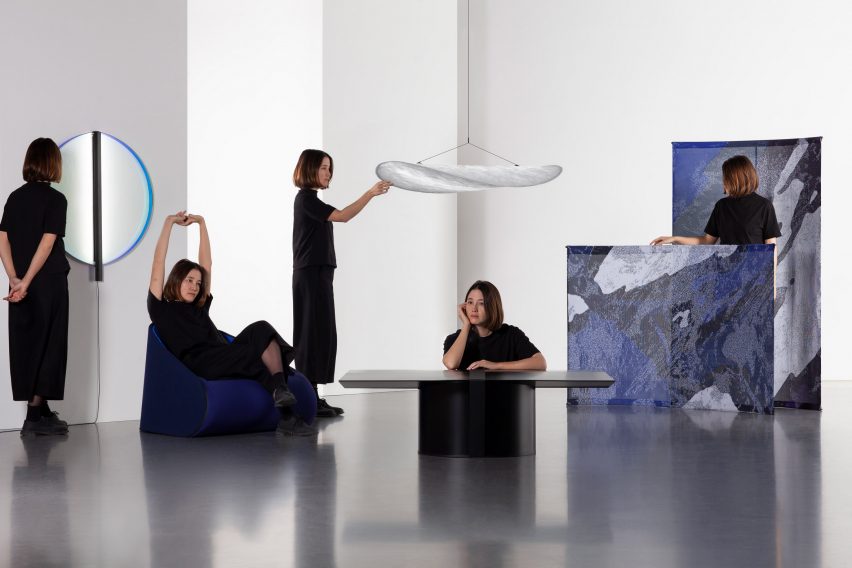
"We think the furniture industry is very old-fashioned," added Tourron.
"The whole idea was to inject all this new technology that we learnt from tech, from fashion and from the automobile industry into a world that has no technology at all in terms of research materials."
Other projects using materials in innovative ways at Milan design week this year include Carlo Ratti's Gaudí-inspired structures installed in Milan's botanical garden, which were grown from mushroom mycelium, and the work of Alexander Schul, one of the winners of Rossana Orlandi's Ro Plastic Prize, which included a chair, lamp and side table from recycled plastic.